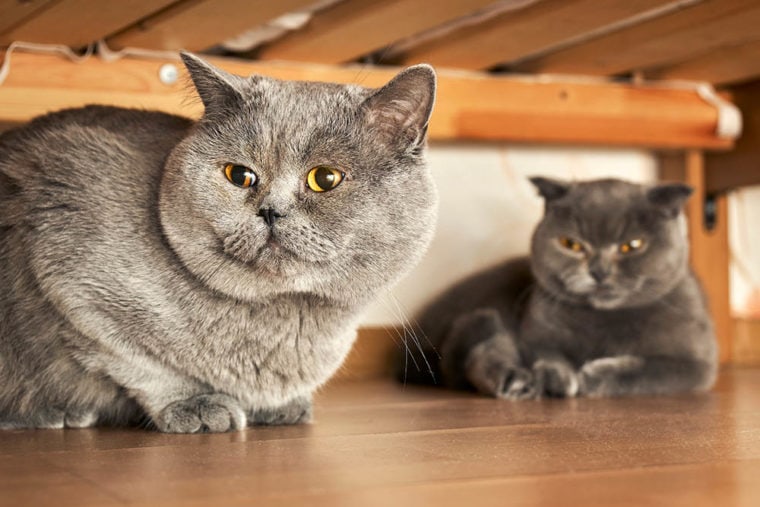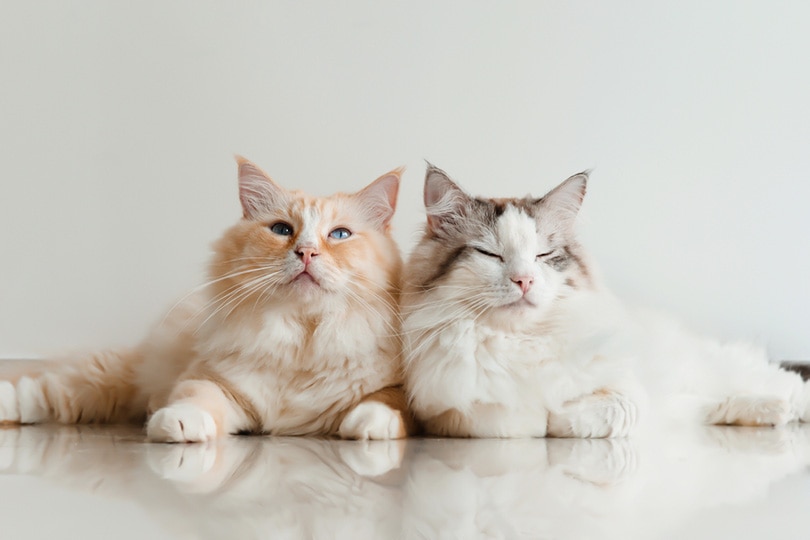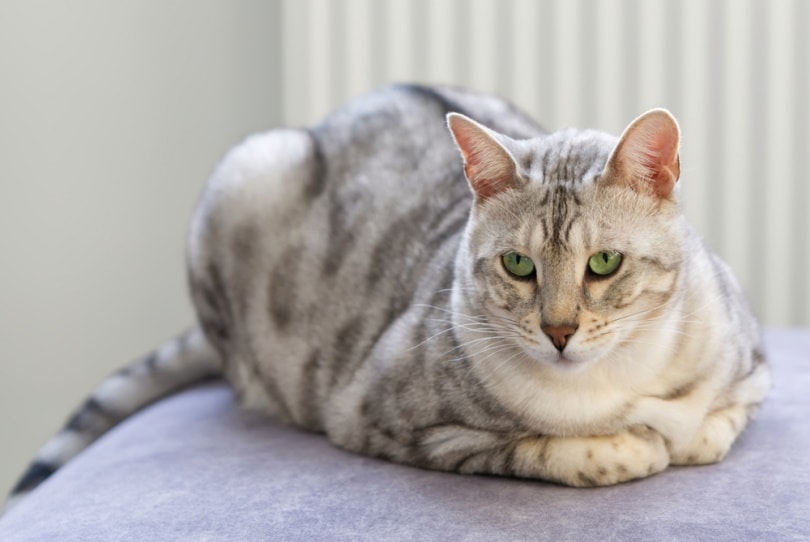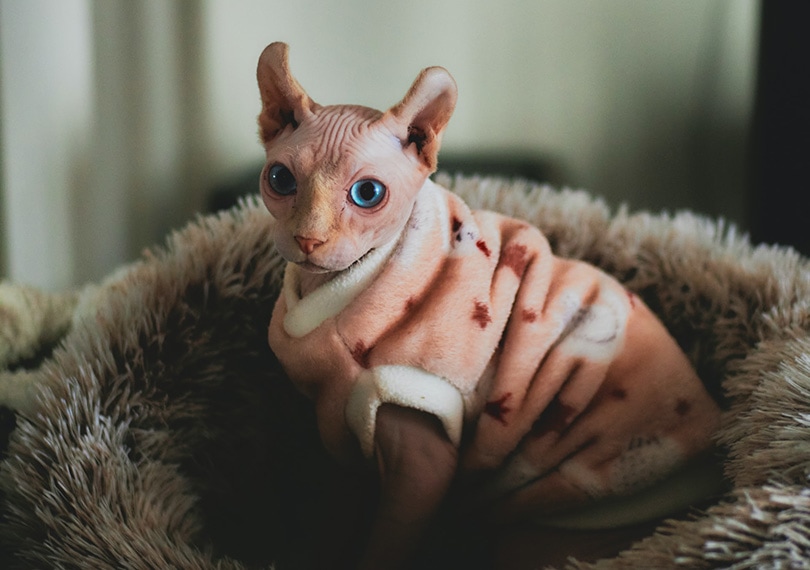
Almost one-third of UK households own a cat, which makes the country a cat lover’s paradise. People are buying more cats, and the number of owners is rising. Currently, it’s estimated that there are roughly 12 million cats in the UK. Cats aren’t the only ones who are more popular than ever these days. More people own pets of all kinds—everything from dogs to exotic pets such as chameleons and snakes are more popular today than ever before in the British Isles.
It is likely that an increase in disposable income, a greater interest in animal companionship, and the fact that people worked from home during the pandemic may account for some of the rising popularity of cats as pets. So, cat ownership has surged in 2021 and 2022. But exactly how many cats are there in the UK? This article examines the UK’s latest statistics on cat ownership.
Please note: This article’s statistics come from third-party sources and do not represent the opinions of this website.
Top 14 Cat Population Statistics in the UK
- Cats are estimated to number 12 million across the UK.
- Cats are the second most popular pet in the UK (28% of households).
- Cats are the most popular in London.
- In the UK, approximately 8 million households have cats.
- The average number of cats per household in the UK is 1.5.
- UK households owning cats increased by 1% between 2021 and 2022.
- 65% of cats in the UK are mixed breeds.
- Britain’s most popular cat breed is the British Shorthair.
- There are an estimated 250,000 unowned cats in the UK.
- In the UK, 25% of cats are adopted from rescue centers or shelters.
- The most popular name for female cats is Poppy in the UK.
- The UK’s most popular male cat name is Charlie.
- The number of cats in the UK has tripled in the last 60 years.
- There could be more female than male cats in the UK.

Cats in Numbers
1. Cats are estimated to number 12 million across the UK.
(PFMA.org)
In the United Kingdom, there are estimated to be 12 million cats. There has been a steady increase in the number of domestic cats in recent decades. There are a number of reasons why cats are popular pets. First, they are relatively low maintenance compared to other pets like dogs. They don’t need to be taken for walks and can be left alone for short periods of time.
Second, they are relatively clean animals and don’t require as much grooming as other pets. Third, they are typically quiet animals that won’t disturb the peace in an apartment or condo building.

2. Cats are the second most popular pet in the UK (28% of households).
(PFMA.org)
A recent survey by the Pet Food Manufacturing Association (PFMA) found that 28% of UK households have cats. It appears that cats are becoming steadily ever more popular pets in the UK. According to the same survey, 34% of UK households have dogs. So, although dogs are currently number one, cats are also extremely prevalent. 28% of households is a significant portion of the population and this indicates that cats are a significant presence in British homes. While dogs may be more popular overall, it is clear that cats are also a significant part of the UK pet landscape.
3. Cats are the most popular in London.
(Petplan)
Cat ownership rates are highest in London, where 61% of households surveyed own cats. In cities, cats are becoming increasingly popular because they are affordable and require less maintenance. Smaller city dwellings make ideal homes for cats.
4. In the UK, approximately 8 million households have cats.
(IBISWorld, PFMA.org)
Nearly 8 million households in the United Kingdom own a cat. There are many homes with cats today, as they have become widespread in recent years. It is undeniable that they have become a staple in many UK households, and that many people find cats a welcome addition to their homes.
5. The average number of cats per household in the UK is 1.5.
(IBISWorld, PFMA.org, AVMA.org)
The average number of cats per household in the UK is 1.5. Owning more than one cat has many advantages. Being in a multi-cat household has been shown to lengthen cats’ lives and keep them healthy. Furthermore, multiple cats can provide companionship and socialization to each other, making their lives happier as well.
Cat Ownership in the UK is Increasing
6. UK households owning cats increased by 1% between 2021 and 2022.
(PFMA.org)
In large part, the pandemic can be credited for the rise in UK households owning cats between 2021 and 2022. There was an increase in the demand for cats as pets because of the pandemic, which caused many people to work from home. With cats at home, people can relax at home with a beloved pet and unwind. Cats also provide loving companionship and amusement to those with extra time to devote to them.

7. 65% of cats in the UK are mixed breeds.
(Cats Protection)
Mixed-breed cats account for the majority of cats owned in the UK. This trend can be attributed to a number of factors. It is often cheaper—perhaps even free in some cases—to get a mixed-breed cat from a shelter or to take in a stray from the street. Increasingly, cat owners and some veterinarians claim that mixed-breed cats have a healthier gene pool than purebred cats. This is likely due to the fact that they have a lower chance of inheriting recessive diseases.
8. Britain’s most popular cat breed is the British Shorthair.
(GCCF)
In 2020, over 9,000 British Shorthairs were registered with the Governing Council Of The Cat Fancy (GCCF). Over the previous year, this breed had 19% more registrations than it did in 2019. According to GCCF registrations made in the UK over the past 10 years, British Shorthairs have occupied the top spot for at least a decade in terms of the number of registrations.
9. There are an estimated 250,000 unowned cats in the UK.
(CATS Protection)
Cat Watch, a project run by CATS protection, estimates that there are around a quarter million cats without homes on the streets of cities and towns in the UK. The survey recorded the number of feral cats in five urban Cat Watch areas – Beeston, Bradford, Bulwell, Dunstable & Houghton Regis, and Everton. Using the data they gathered, they extrapolated that 247,429 unowned urban felines reside in the United Kingdom.
10. In the UK, 25% of cats are adopted from rescue centers or shelters
(CATS Protection)
In the UK, approximately 25% of cats are adopted from either a shelter or rescue center. Many people choose to adopt a cat from a shelter or rescue instead of buying one because they know that there are many homeless and abandoned cats available, and they know they can make a huge difference in a cat’s life by giving them a forever home.
11. Poppy is the most popular name for female cats in the UK.
(CATS Protection)
According to a 2019 survey by CATS Protection, Poppy is the most popular name for female cats in the UK. This is possibly because it is short and easy to remember. It may also be popular because it sounds delicate and sweet. Poppy is also a quintessentially British girl’s name, which is perhaps a reflection of the pride people from the country take in their heritage.

12. The UK’s most popular male cat name is Charlie.
(CATS Protection)
There could be a few reasons why Charlie is the most popular male cat name in the UK. Firstly, it is a relatively simple name that is easy to remember and pronounce. Secondly, it has an old-fashioned, gentlemanly feel to it which could appeal to some cat owners. Finally, Charlie is a highly recognizable and well-loved British name, which could also contribute to its popularity.
13. The number of cats in the UK has almost tripled in the last 60 years.
(PFMA.org)
The UK had an estimated 4.1 million cats in 1965, which is almost three times smaller than today’s estimate of 12 million. This surge in cat ownership is likely due to a combination of factors, including changes in lifestyle, increased household wealth, and the greater availability of food. It is likely that this increase has had an impact on the environment, as more cats require more resources to keep them fed and healthy.
14. There could be more female than male cats in the UK
(Royal Veterinary College)
The Royal Veterinary College recorded that there were slightly fewer vet visits by male cats than female cats in the UK, according to data from 299 veterinarian clinics. This could mean that there are more female cats, but it could also just be that female cats suffer from different health issues, for example, pregnancy.
Conclusion
In conclusion, the UK has an estimated 12 million cats, making it one of the world’s most cat-loving countries. Despite this abundance, there is still always more to learn about the feline friends who share our homes. With more people becoming aware of the joys of cat ownership, we can only expect their numbers to continue to grow.
Featured Image Credit: Georgy Dzyura, Shutterstoc








